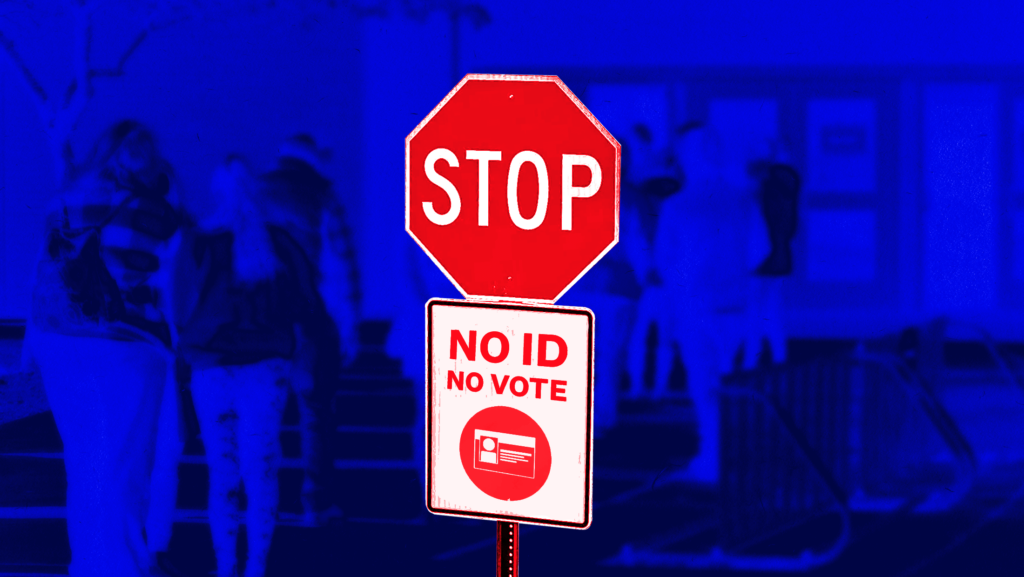Ohio’s Voter ID Law Doesn’t Just Harm Students Like Me

Voter suppression tactics are cunning, deliberate and reprehensible. As an Ohio college student deeply invested in democracy, I strongly oppose any attempts to silence young people at the polls. My peers and I are determined to make our voices heard in November.
Ohio House Bill 458, signed into law last January by Ohio Gov. Mike DeWine (R), has introduced several changes to our voting laws. The move aligns with actions taken by lawmakers in several other states. Arkansas, Idaho, Missouri, Montana, Nebraska, North Carolina and Wyoming join Ohio as states that have enacted stricter voter ID laws since the 2020 election. These states claim to be combating voter fraud, but in reality, accounts of fraud are very rare, according to the Brennan Center for Justice.
What Ohio’s law actually dampens is the ability of college students to vote. Now, my fellow students either need an Ohio driver’s license or a U.S. passport to vote in person. The law rules out utility bills or other “proof of residence” forms to validate a student’s identity at the polls, which were previously allowed and heavily utilized by out-of-state college students. My demographic turned out in large numbers in 2020, and I fear that Ohio’s turnout this year will be diluted for those aged 18-25 due to Ohio’s new voter ID law. This is a direct punch to out-of-state students who do not wish to become an official Ohio resident and who could previously vote in either their home state or Ohio with ease.
Not only does this law impact college students, but it also affects older residents, those without a driver’s license and Ohioans with disabilities. There are new restrictions on who can return a ballot to prevent the feared “ballot harvesting,” banning those like grandchildren and trusted non-family members like caregivers from returning a voter’s ballot with their permission.
With the new law requiring either a valid driver’s license, state ID or passport, older non-driving Ohioans are impacted. I reflect on my late grandmother, who was an eligible voter in Ohio, but voted from her nursing home without an Ohio license. She did not have a passport nor an Ohio state ID but had an expired Iowa license. Under our law, as it stands, she could not have voted. My grandmother is not the exception but rather in good company with many older citizens or those who do not drive and wish to have their voices heard.
I’m concerned that Ohio’s photo ID law falls within a broader nationwide trend.
As people hear about the impact of the laws, they’re fired up. There is a false narrative that Gen Z does not care about politics, based on our typically low percentage of turnout. In reality, last year’s general election in Ohio brought countless young voters to the polls, excited to enshrine abortion access in our state constitution and legalize marijuana. Close to 700,000 Ohioans voted early, in person, or by mail, with 21.6% of eligible 18-29-year-olds casting a ballot in the state, according to Tuft University’s CIRCLE data.
Gen Z and millennials are now the largest voting bloc in the country. Like many Ohioans, my peers care a great deal about a host of issues — abortion access is key among them. Slowing the impacts of climate change, holding elected officials accountable, creating modern day gun regulations and obtaining affordable housing and education compel us to share our opinions. I registered hundreds of voters in Ohio last fall myself as an IGNITE fellow in Ohio.
Instead of cracking down on so-called voter fraud, I wish our state legislature was enacting voter-friendly policies, such as same-day voter registration, which we do not currently have in Ohio. Over 20 states across the U.S. already offer this type of registration. Anyone who was scrambling to find eclipse glasses a few weeks ago knows the importance of accessing something, like your ability to vote, on the day of importance.
Currently, Ohioans must register to vote at least 30 days before the election. Same-day voter registration has a slew of benefits for college students as it allows those who requested an absentee ballot but did not receive it in time to re-register on their campus on Election Day and still have their opinions heard. It also ensures that voters who were unknowingly purged from the voter rolls or those who recently moved and forgot to update their address can still vote.
I’m concerned that Ohio’s photo ID law falls within a broader nationwide trend. Some states have sought to make voting easier for students. Others are trying to introduce more restrictive measures. There are deep divisions across the country about voting access.
With the November elections set to be close, it appears that legislators are afraid of the will of the people and thus are attempting to put their thumb on the scale to keep certain eligible voters excluded from the count. The last time I checked, America is a democracy. This means everybody who wants to vote and is legally allowed to should have the necessary access, fairly and constitutionally.
Cameron Tiefenthaler is a student at Miami University in Ohio and a Dr. Anne Moses fellow for IGNITE National.